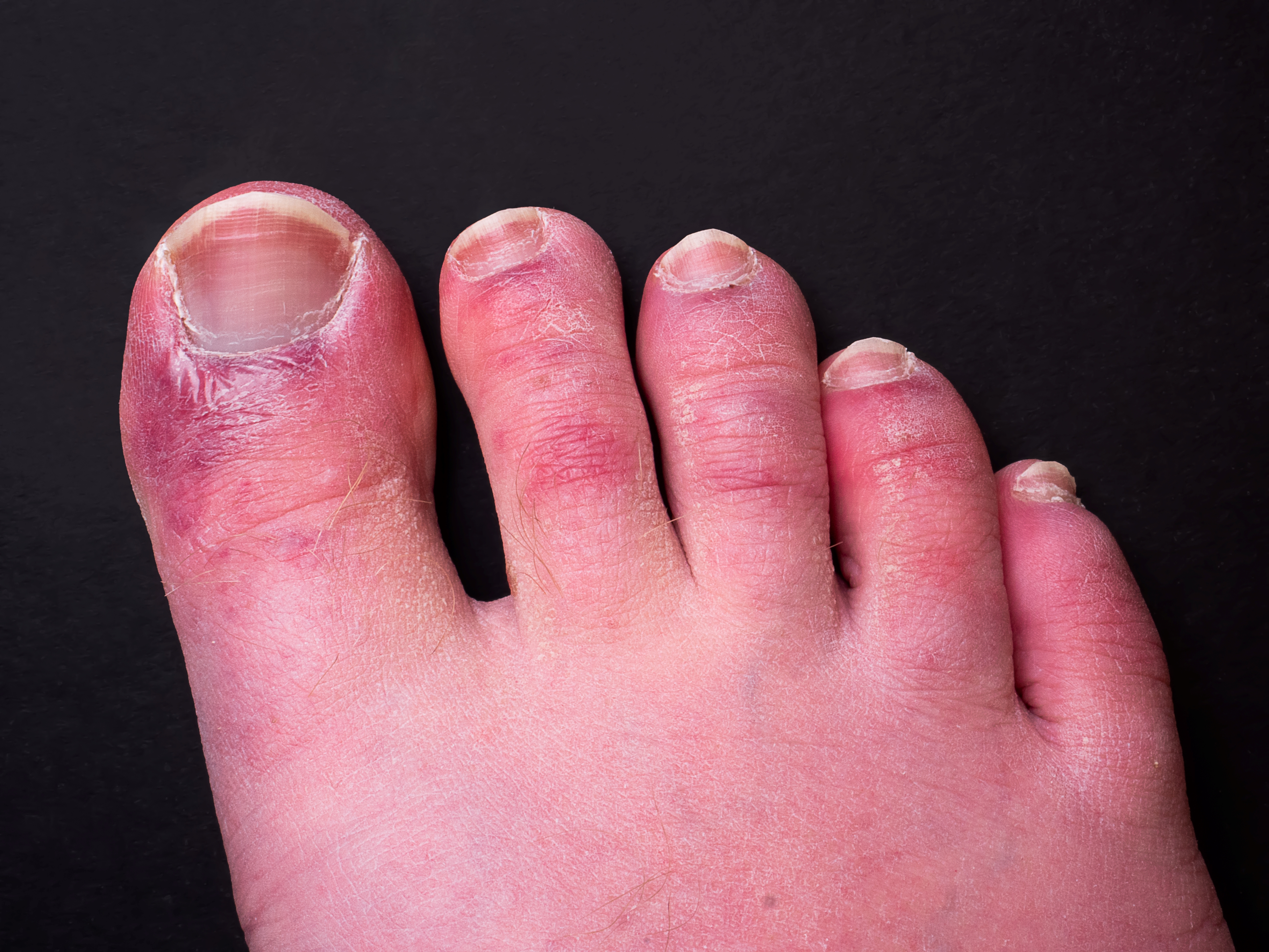We don’t like saying it any more than you like hearing it, but COVID-19 has not gone away. Many of us know people who’ve recently gone down with coughs and sneezes, and you may even have asked yourself that timeless question: do I have hay fever or COVID? But what about symptoms that don’t mimic other respiratory conditions? It might be a good time to refresh your memory of some of the weirder ways in which COVID can present.
What’s the COVID situation right now?
According to data from the Centers for Disease Control and Prevention (CDC), COVID-19 cases in the US were slowly ticking upwards as of week ending July 6, 2024. That week, 11 percent of tests for the virus came back positive, compared to 9.1 percent the week before. Similarly, emergency department visits and hospitalization rates showed small increases, although deaths from the virus remained stable.
In the UK, up to and including July 3, positive COVID case numbers were actually trending downwards, with a 16.6 percent week-on-week decrease. However, deaths and hospital admissions increased in the seven days up to June 28.
CDC data show that the most prevalent circulating variant in the US right now is KP.3, one of the FLiRT variants that have been rising to prominence this year, seemingly due to mutations that allow them to better evade the human immune system.
The availability of vaccines, coupled with lessons learned about how non-pharmaceutical measures like masking can help stop the virus in its tracks, mean that the COVID of 2024 is a very different beast than the COVID of early 2020. However, it’s still proving its ability to disrupt our lives, as we’ve seen with the recent reintroduction of mask mandates at the Tour de France amid riders dropping out of the race.
What are the most common symptoms of the latest COVID variants?
The CDC list of the most common COVID symptoms was last updated in March 2024, and includes many of the signs we would expect with a respiratory illness, such as a cough, fever, and fatigue. Sore throats and headaches are also common, and many people also still report a loss (usually temporary) of their sense of taste and/or smell. But as the CDC points out, COVID symptoms can be very variable, and there are some more surprising signs that you might want to be aware of.
What are some unexpected COVID symptoms?
Gastrointestinal issues
If posts on social media are anything to go by, many people have been surprised to learn that COVID can make itself known via an upset tummy.
Low appetite, nausea, vomiting, and diarrhea can all be signs of a COVID infection, and they may occur with or without other, more typical symptoms. Gastrointestinal distress can also be caused by drugs that may be used to help treat COVID, and stomach and bowel issues may persist in people with long COVID.
All this leads some people to mistake a COVID infection for a bout of food poisoning, or other infections like norovirus – but it’s worth bearing in mind that just because you don’t have a cough, it doesn’t mean it’s not COVID.
“If everybody in your house has COVID and you have diarrhea, then you have to put two and two together,” infectious disease specialist Dr Peter Chin-Hong told the New York Times.
COVID tongue
So-called “COVID tongue” is a symptom that’s been recognized since quite early on in the pandemic. While rare, ulcers and odd white patches on the tongue or inside the mouth have been reported by people with COVID, so if you experience any of these things unexpectedly it’s possible that that is the culprit. If you’re concerned about changes in your mouth, it’s always best to discuss them with your dentist.
Treatment for COVID can also have some unfortunate side effects in this area too, with a small percentage of people taking the drug Paxlovid reporting dysgeusia – a bitter, metallic, or sour taste in the mouth.
COVID toes
Similarly, COVID can also cause a condition that resembles chilblains on the feet and toes, with reddening or dark discoloration of the skin, pain, itching, and sometimes blisters.
Discoloration of the toes, similar to what is seen with chilblains, can accompany COVID-19.
Image credit: Chris Curry/Shutterstock.com
The takeaway
If you come down with cough or cold symptoms in the next few weeks, unfortunately you should continue to assume that it could be COVID-19. The only way to really be sure on the eternal cold/hay fever/COVID debate is to get tested.
If you’re in the Southern Hemisphere, you should probably also add flu to your list of potential diagnoses, since the season is currently in full swing, but for those of us in the Northern Hemisphere influenza currently remains at very low levels as we approach the middle of summer.
But it’s not only coughs and sniffles that can herald a bout of COVID. Hopefully, we’ve reminded you to keep an eye out for the more unexpected symptoms as well.
The content of this article is not intended to be a substitute for professional medical advice, diagnosis, or treatment. Always seek the advice of qualified health providers with questions you may have regarding medical conditions.
Source Link: With COVID Spreading, Could You Spot These Lesser-Known Symptoms?
